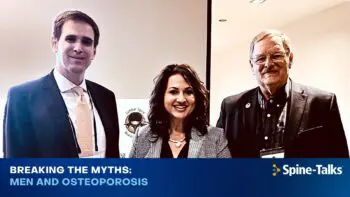Myofascial pain syndrome is a condition that causes pain in the muscles and the sheath of tissue (called fascia) that surrounds the muscles. This pain often comes from specific points in the muscles called trigger points, which are tight knots that can be very tender to touch.
Common Causes
- Muscle injury: Acute trauma or injury to a muscle.
- Repetitive motion: Repeated use of a muscle, such as from certain work or sports activities.
- Poor posture: Sitting or standing incorrectly for long periods.
- Stress: Emotional stress can increase muscle tension.
- Lack of activity: Inactivity or prolonged bed rest can lead to muscle stiffness and pain.
Symptoms
- Deep, aching pain in a muscle.
- Persistent pain or tenderness in a muscle or group of muscles.
- Pain that worsens with activity or stress.
- A sensitive knot in a muscle that, when pressed, causes pain in a different part of your body (referred pain).
- Stiffness or tightness in the muscles.
Diagnostic Tests
- Physical exam: The doctor will press on your muscles to find the trigger points.
- Medical history: Discuss your symptoms and any possible causes with your doctor.
- Imaging tests: Usually not needed for diagnosis, but sometimes X-rays or MRIs can help rule out other conditions.
Treatment Options
Non-Surgical:
- Medications: Over-the-counter pain relievers or prescription medications.
- Physical therapy: Stretching and strengthening exercises, as well as techniques like ultrasound or massage.
- Trigger point injections: Injecting a numbing agent or steroid directly into the trigger point to relieve pain.
- Dry needling: Inserting thin needles into the trigger points to release the tension.
- Acupuncture: Traditional Chinese medicine technique using needles to relieve pain.
Surgical:
- Surgery is not typically used to treat myofascial pain syndrome.
Common Conditions That Can Cause Similar Symptoms
- Fibromyalgia: A condition that causes widespread musculoskeletal pain.
- Tension headaches: Headaches caused by muscle tension.
- Arthritis: Inflammation of the joints, which can cause muscle pain.
- Spinal conditions: Such as herniated discs or spinal stenosis, which can cause referred pain.
When to See the Doctor
- If you have persistent muscle pain that doesn’t get better with rest or home care.
- If the pain interferes with your daily activities or sleep.
- If you notice a knot in a muscle that is very tender to touch.
What to Ask the Doctor
- What is causing my muscle pain?
- What treatment options are available?
- How long will it take to recover?
- How can I prevent the pain from coming back?
- Are there any exercises or activities I should avoid?
Home Remedies for Mild Symptoms
- Exercise: Gentle stretching and strengthening exercises can help relieve muscle tension.
- Heat therapy: Applying heat can relax tight muscles.
- Cold therapy: Applying ice can reduce inflammation and numb the pain.
- Massage: Gently massaging the affected muscle can help release tension.
- Good posture: Maintaining proper posture can reduce muscle strain.
Understanding myofascial pain syndrome can help you know when to seek medical advice and what questions to ask your doctor. Early detection and treatment can help improve or resolve the condition and improve your quality of life.



